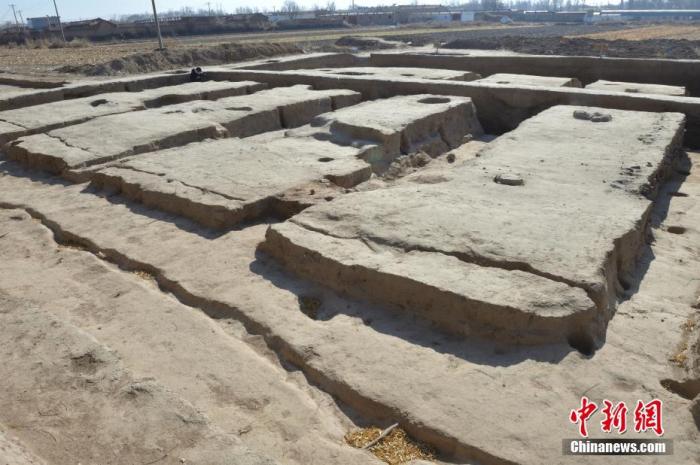China News Agency, Hohhot, November 9th (Reporter Li Aiping) On the 9th, the Inner Mongolia Autonomous Region Institute of Cultural Relics and Archaeology stated that the archaeological team formed by the institute and Sun Yat-sen University revealed (ie: discovery) in Shaliangzi Village, Yuquan District, Hohhot City. The base site of a large granary building in the middle and late Western Han Dynasty about 2000 years ago.
The archaeological department believes that this is the largest single rammed-earth building of the Han Dynasty discovered in China.
On November 9, aerial photography of the excavation site of a single rammed-earth building of the Han Dynasty in the suburbs of Hohhot, Inner Mongolia.
Photo by China News Agency reporter Liu Wenhua
The reporter learned that the foundation site of this large trench-type rammed earth high platform building in Hohhot is located in the middle of the West Han City site with an area of about 110,000 square meters. It is east-west, about 170 meters long from east to west, and about 21 meters wide from north to south. The remaining long strip building is 16 rooms wide and 2 rooms deep.
At present, within this large house site, archaeologists have exposed 16 north-south grooves. The archaeologists speculate that these grooves are used for ventilation and moisture prevention.
The archaeologists preliminarily believe that this site is likely to be the foundation of a large granary building in the Western Han Dynasty. It was used for about 100 years and was finally destroyed by a fire.
On November 9, the excavation site of a single rammed earth high platform building of the Han Dynasty in Hohhot, Inner Mongolia.
Photo by China News Agency reporter Liu Wenhua
Liu Yang, the person in charge of the archaeological project, said: "According to existing research, this storage building is located in Duhe County, Yunzhong County in the Western Han Dynasty. It is a border city along the Northern Great Wall in the Han Dynasty. The building we found in the border city has a single roof. The eaves are sloped on all sides. The size of the tile used is larger than the tile found in Yunzhong County. The size of the tube tiles and slab tiles used are the same as those unearthed from the palace in Chang'an. The national granary of the Western Han Dynasty near Chang'an City-the tile from Jingshi Cang Big."
The project executive leader Jin Zhiwei said in an interview with the media that the single rammed-earth building of the Han Dynasty discovered in Hohhot this time is also the first suspected granary building in the Western Han border city unearthed in China. It provides image data for the study of storage buildings in the Han Dynasty border city. Study the layout and connotation of border cities in the Han Dynasty to provide new information.
(Finish)

